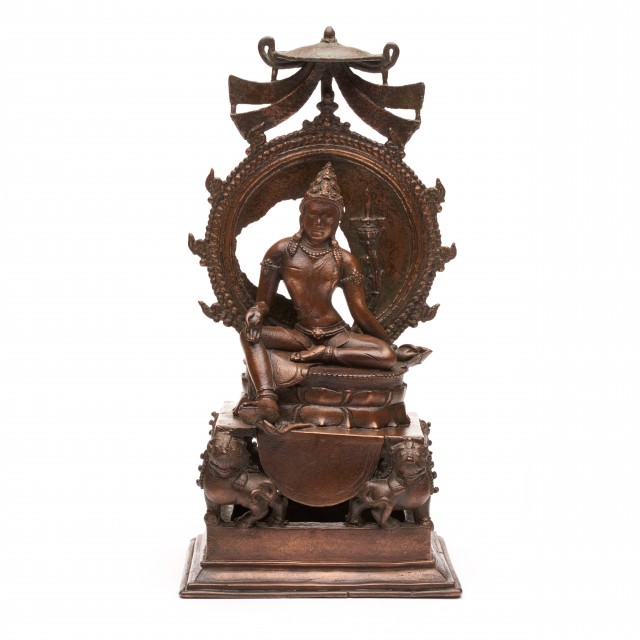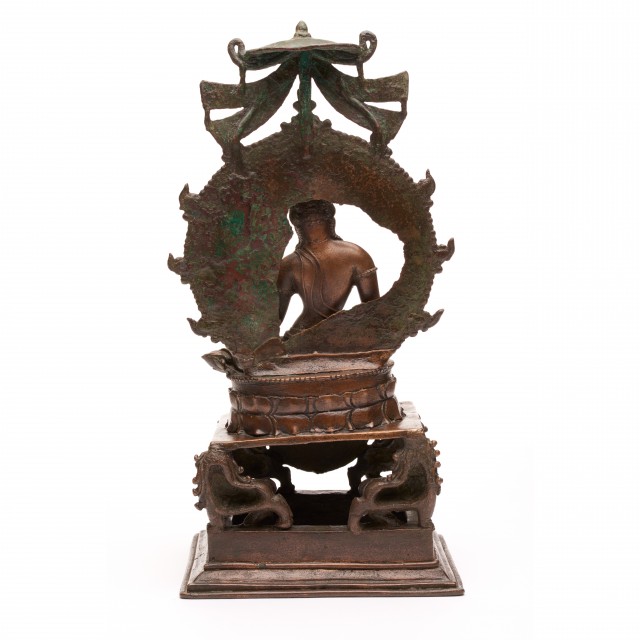Bodhisattva Manjushri in the form of Sita Manjughosa

Photography by Synthescape, Digital image © Asia Society

Photography by Synthescape, Digital image © Asia Society
Bodhisattva Manjushri in the form of Sita Manjughosa
Late 8th century
Thailand
Copper alloy
H. 12 1/4 x W. 6 1/8 in. (31.1 x 15.6 cm)
Asia Society, New York: Mr. and Mrs. John D. Rockefeller 3rd Collection, 1979.82
Provenance
John D. Rockefeller 3rd, New York, NY; acquired from Isidor Kahane, Dobbs Ferry, New York, May 1968.
The Asia Society, New York, NY, bequest of John D. Rockefeller 3rd, New York, NY, 1979.
Licensing inquiries
The lotus held in the left hand of this image of Manjushri, the Bodhisattva of Wisdom, has a book and sword resting atop it. These are Manjushri's traditional attributes, the objects that symbolize his character: the book represents Manjushri's role as the embodiment of transcendent wisdom while the sword is the weapon with which he cuts through ignorance. His right hand, which performs the gift-giving gesture (varada mudra), identifies this form of Manjushri as Sita Manjughosa ("White Gift-bestowing"). His conical hairstyle is adorned with both a crown and with five small images of seated Buddhas, which represent the Buddhas of the five directions. The four lions supporting the pedestal, although a standard element in Buddhist thrones, also represent the vehicle (vahana) associated with Manjushri. The pendant half-moon-shaped form on the front of the pedestal represents draped cloth.


